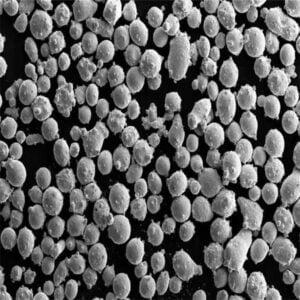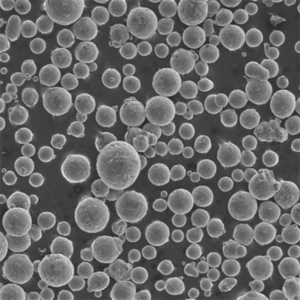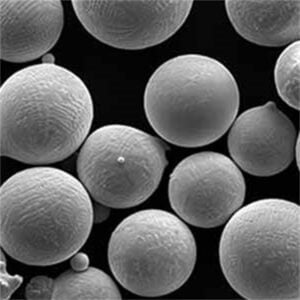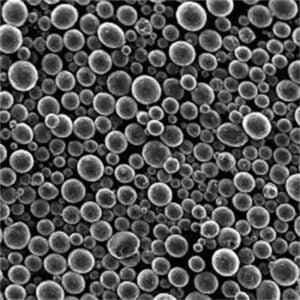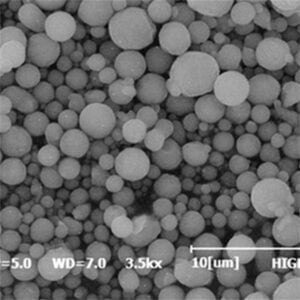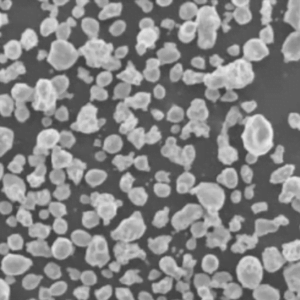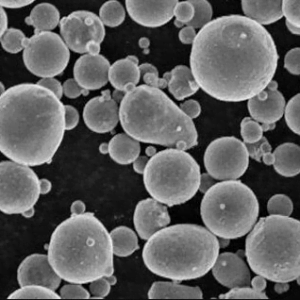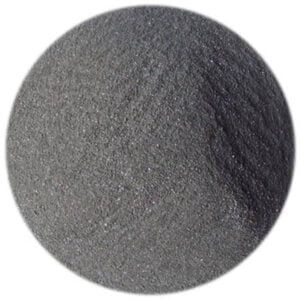7075 Aluminum Powder: A Comprehensive Guide
Table of Contents
Overview of 7075 Aluminum Powder
7075 aluminum powder is a very strong aluminum alloy made from aluminum, zinc, magnesium, copper and small amounts of silicon, iron, manganese, chromium and titanium. It is widely used in applications requiring high strength-to-weight ratio and good fatigue strength like aerospace and aviation components.
7075 aluminum powder has excellent strength properties, good fatigue resistance, average machinability and is heat treatable. It can be processed through extrusion, forging or rolling and is available in various forms like powder, sheet, plate, bars and extrusions.
Some key properties and characteristics of 7075 aluminum powder:
- High strength and hardness – Has ultimate tensile strength of 510-570 MPa and Brinell hardness of 150-190.
- Good fatigue resistance – Around 30-40% better fatigue strength than other 7xxx series aluminum alloys like 7050.
- Lightweight – Density is 2.81 g/cm3 making it lighter than steel alloys.
- Heat treatable – Can be strengthened through heat treatment processes like solution heat treatment, quenching and artificial aging.
- Good toughness – Elongation of 11% in 50mm section.
- Good dimensional stability – Does not suffer from strain hardening issues.
- Corrosion resistant – Resists exfoliation corrosion due to addition of chromium.
- Weldable – Can be welded using gas tungsten arc welding and gas metal arc welding.
- Conductive – Thermal conductivity is 130 W/m-K and electrical conductivity is 43% IACS.
Composition of 7075 Aluminum
7075 aluminum belongs to the 7xxx series or Al-Zn-Mg-Cu series of high strength aluminum alloys. The typical composition is shown below:
| Element | Zn | Mg | Cu | Fe | Si | Mn | Cr | Ti | Al |
|---|---|---|---|---|---|---|---|---|---|
| Weight % | 5.1-6.1 | 2.1-2.9 | 1.2-2.0 | Max 0.5 | Max 0.4 | Max 0.3 | 0.18-0.28 | Max 0.2 | Balance |
- Zinc is the primary alloying element which provides strength through precipitation hardening. Mg and Cu also help in precipitation hardening.
- Chromium improves stress corrosion cracking resistance.
- Iron, silicon, manganese and titanium are present as impurities.
The combination of zinc, magnesium and copper make 7075 highly strong while maintaining adequate formability, weldability, machinability and corrosion resistance.
Mechanical Properties of 7075 Aluminum
7075 aluminum powder possesses excellent strength properties coupled with good fracture toughness. The mechanical properties in annealed and various heat treated tempers are given below:
Table 1. Mechanical properties of 7075 aluminum
| Temper | Yield Strength (MPa) | Tensile Strength (MPa) | Elongation (%) |
|---|---|---|---|
| O | 103 | 241 | 17 |
| T6 | 503 | 572 | 11 |
| T651 | 469 | 524 | 12 |
| T7351 | 503 | 572 | 8 |
| T736 | 455 | 496 | 10 |
- In annealed O temper, elongation is high while strength is low.
- In peak aged T6 temper, yield strength reaches 503 MPa and tensile strength 572 MPa while elongation is 11%.
- Overaged T7351 temper also has high strengths with reduced ductility.
- Under-aged tempers like T651 and T736 offer a good balance of strength and formability.
7075 aluminum has excellent fatigue resistance, almost comparable to steels. It has good fracture toughness of 33 MPa√m in T6 temper. It also displays good crack growth resistance.
Physical Properties
7075 aluminum powder has low density, high thermal and electrical conductivity and good corrosion resistance. Its density is 2.81 g/cm3, almost one-third that of steel alloys.
Table 2. Physical properties of 7075 aluminum
| Property | Value |
|---|---|
| Density | 2.81 g/cm3 |
| Melting point | 475°C |
| Thermal conductivity | 130 W/m-K |
| Electrical conductivity | 43% IACS |
| Modulus of elasticity | 71.7 GPa |
| Poisson’s ratio | 0.33 |
| Thermal expansion | 23.6 x 10-6/K |
The thermal conductivity is much higher than polymers but lower than pure aluminum and copper. The thermal expansion rate is 50% higher than mild steel.
Machining Characteristics
7075 aluminum has average machinability rating of 65% when compared to the ease of machining brass.
- Turning – Carbide cutting tools are recommended. High cutting speeds and low feed rates are preferred.
- Milling – Carbide end mills with high helix angles should be used. Climb milling gives better finish.
- Drilling – Twist drills made of high speed steel or carbide are suitable. Chip control is important.
- Grinding – Resinoid bonded wheels that resist loading are effective. Use copious coolant.
- Sawing – Low feed rates with fine tooth blades give smooth finish. Air or mist systems aid chip control.
Adding sulfur to improve chip breaking can further enhance machinability. Use rigid setups and sharp tools to avoid work hardening.
Weldability
7075 aluminum alloy has fairly good weldability by following proper techniques –
- Gas tungsten arc welding (GTAW) is commonly used. 4043 aluminum filler alloy produces strongest welds.
- Gas metal arc welding (GMAW) can also be used but heat input should be minimized to reduce hot cracking.
- Resistance spot welding with truncated cone electrodes works very well. Weld interfaces should be thoroughly cleaned.
- Friction stir welding can produce high quality solid state welds in all tempers of 7075 aluminum.
- Heat affected zone will be softer than base metal. Solution treatment and aging restores properties.
Corrosion Resistance
7075 aluminum powder offers good resistance to general corrosion in the atmosphere and in freshwater.
- The thin surface oxide film provides effective barrier to corrosion in neutral solutions.
- Alloying elements like zinc, magnesium, copper and chromium provide corrosion resistance.
- Chromium addition prevents susceptibility to intergranular and exfoliation corrosion.
- Poor resistance to alkaline solutions but can be improved by anodizing.
- Sensitive to stress corrosion cracking in some environments when highly stressed.
- Prone to galvanic corrosion when coupled to more noble metals. Avoid contact with stainless steel.
Overall, 7075 aluminum has satisfactory corrosion resistance for most common architectural, marine and industrial applications.
Applications of 7075 Aluminum
The unique combination of high strength, light weight, fatigue resistance and reasonable cost make 7075 aluminum suitable for various demanding applications:
Table 3. Applications of 7075 aluminum
| Industry | Applications |
|---|---|
| Aerospace | Aircraft structural components like wings, fuselages, bulkheads, frames, fasteners |
| Missile and rocket casings, launch tubes, fasteners, brackets | |
| Satellite dishes and structures | |
| Automotive | Chassis, links, driveline yokes, shafts, valves, fittings |
| Marine | Masts, antenna supporting structures |
| Boat hulls, gangways, superstructures, propellers | |
| Defense | Armored vehicle hulls, housings, mine sweeping systems |
| Gun mounts, rocket launchers, shell casings | |
| General engineering | Jigs, fixtures, robot arms, valves, gears, shafts |
| Motor housings, couplings, cylinder liners, blow moulds |
Aerospace applications account for the majority of usage due to strict strength and weight requirements. Automotive and high performance marine components also utilize 7075 aluminum extrusions and forgings.
Types of 7075 Aluminum Powder
7075 aluminum powder is available in different types depending on the production process and particle characteristics:
Atomized 7075 Aluminum Powder
- Produced by atomizing molten 7075 aluminum alloy into fine droplets which solidify into powder.
- Irregular shaped particles with wide size distribution from 10 to 180 microns.
- Used in powder metallurgy route for making components by compacting and sintering.
Table 4. Specifications of atomized 7075 aluminum powder
| Property | Value |
|---|---|
| Particle shape | Irregular, spheroidal |
| Particle size (microns) | 10 – 180 |
| Apparent density (g/cc) | ~ 2.7 |
| Real density (g/cc) | 2.8 |
| Flow rate (s/50g) | ~ 28 |
Gas Atomized 7075 Al Powder
- Produced by inert gas atomization into very fine spherical particles.
- Smooth surface, regular shape and narrow size distribution.
- Used in advanced metal AM processes like DMLS and SLM additive manufacturing.
Table 5. Specifications of gas atomized 7075 aluminum powder
| Property | Value |
|---|---|
| Particle shape | Spherical |
| Particle size (microns) | 15 – 45 |
| Apparent density (g/cc) | ~ 2 |
| Real density (g/cc) | 2.8 |
| Flow rate (s/50g) | ~ 25 |
Milled 7075 Aluminum Flakes
- Irregular flake like particles produced by milling 7075 aluminum powder feedstock.
- High surface area flaky particles used in coatings and primers.
- Also used as fuel additives, in explosives and pyrotechnics.
Table 6. Specifications of milled 7075 aluminum flakes
| Property | Value |
|---|---|
| Particle shape | Flakes |
| Aspect ratio | ~ 10:1 |
| Thickness (microns) | 0.5 – 4 |
| Apparent density (g/cc) | 0.25 – 1 |
| Real density (g/cc) | 2.8 |
Processing of 7075 Aluminum Powder
7075 aluminum powder can be processed into finished components using methods like powder metallurgy press and sinter route as well as additive manufacturing techniques:
Powder Metallurgy Processing
Typical steps include:
- Compaction – Cold pressing followed by isostatic pressing to form green compact parts with 65-90% theoretical density.
- Sintering – Vacuum sintering at 600-650°C for 1-3 hours to achieve closed porosity and 95% density.
- Infiltration – Molten aluminum infiltrated under pressure to increase density to 99% or above.
- Heat treatment – Solution heat treatment followed by quenching and aging to achieve required properties.
The powder metallurgy route can produce complex net shape components to close tolerances avoiding wasteful machining.
Additive Manufacturing
7075 aluminum powder is processed into full density components using powder bed fusion techniques like:
- Direct metal laser sintering (DMLS) – Uses focused laser beam to selectively fuse powder layers based on CAD model.
- Selective laser melting (SLM) – Full melting achieved leading to fully dense components with fine microstructure.
- Electron beam melting (EBM) – Faster build rates but only done under vacuum.
AM enables fabrication of intricate, lightweight geometries with superior mechanical properties and material utilization.
Supply and Pricing of 7075 Aluminum Powder
Some of the major global suppliers of 7075 aluminum powder include:
Table 7. 7075 Aluminum powder suppliers and pricing
| Supplier | Grades | Particle Size | Price Range |
|---|---|---|---|
| Alcoa | 7075, Z7075 | 10-180 μm | $10-15/lb |
| Valimet | 7075 | 15-63 μm | $13-17/lb |
| 45-105 μm | $11-14/lb | ||
| TLS Technik | 7075 | 20-90 μm | $15-22/lb |
| Sandvik | 7075 | 15-45 μm | $18-25/lb |
| LPW Technology | 7075 | 15-45 μm | $22-30/lb |
| AP&C | 7075, 7075-O | 5-50 μm | $25-40/lb |
- Atomized 7075 is the lowest cost grade for press and sinter applications.
- Gas atomized powder for AM is costlier due to sphericity and size control.
- Minimum order volumes may range from 25 kg to 500 kg depending on supplier.
- Custom particle size distributions and close size control require premium pricing.
- Prices depend on purity, production method, size range, and purchase volume.
Comparison with Other Aluminum Alloys
7075 aluminum is compared below with some other popular 7xxx and 2xxx series aluminum alloys:
Table 8. Comparison of 7075 aluminum with other alloys
| Alloy | Yield Strength (MPa) | Fatigue Strength (MPa) | Fracture Toughness (MPa√m) | Corrosion Resistance | Weldability | Cost |
|---|---|---|---|---|---|---|
| 2024 Al | 440 | 159 | 29 | Average | Fair | Low |
| 6061 Al | 290 | 115 | 15 | Good | Excellent | Low |
| 7050 Al | 455 | 165 | 25 | Average | Fair | High |
| 7075 Al | 470 | 208 | 33 | Average | Good | Moderate |
| 7178 Al | 490 | 170 | 20 | Average | Fair | Very High |
- 7075 has the best combination of strength, toughness, weldability and cost.
- 2024 is cheaper but has inferior strength and fracture toughness.
- 7178 is strongest but very expensive and poor toughness.
- 6061 has good corrosion resistance and weldability but lower strength.
- 7050 is slightly stronger than 7075 but lower in fatigue strength and toughness.
For most high strength aerospace and defense applications, 7075 offers the best balance of properties and cost. Automotive and general engineering also prefer 7075 for its easy availability, machinability and anodizing response.
Limitations and Disadvantages
Despite its strengths, 7075 aluminum also has certain limitations:
- More susceptible to stress corrosion than some other aluminum alloys.
- Lower fracture toughness than 2xxx alloys like 2024 and 2024.
- Less corrosion resistant than 5xxx marine grade alloys.
- Harder to weld than 4xxx, 5xxx and 6xxx series aluminum alloys.
- Not suitable for high temperature applications above 250°C.
- Significantly more expensive than alloys like 6061 and 5052 aluminum.
- Requires heat treatment processing to achieve optimal properties.
7075 Aluminum Powder – FAQs
Q. How does 7075 aluminum compare with 2024 aluminum?
A. 7075 has higher strength, hardness, fatigue strength and better stress corrosion resistance than 2024 aluminum. It has lower fracture toughness and formability. 7075 also contains higher amounts of alloying elements giving it 30-40% higher cost than 2024 aluminum.
Q. Is 7075-T6 and 7075-T651 temper the same?
A. No. T6 refers to peak aged temper which gives maximum strength. T651 is slightly underaged which provides better toughness at slightly lower strength than T6.
Q. What are the contents of zinc, magnesium and copper in 7075 aluminum?
A. The typical composition is – zinc 5.1-6.1%, magnesium 2.1-2.9%, copper 1.2-2.0%. The remaining is aluminum and other minor alloying elements like chromium, silicon etc.
Q. Can 7075 aluminum be anodized?
A. Yes, 7075 aluminum can be anodized to produce an oxide coating that enhances corrosion and wear resistance. Hard anodizing gives coating thickness up to 75 microns while regular anodizing gives up to 25 microns.
Q. What is the hardness of 7075-T6 aluminum?
A. 7075-T6 aluminum has Brinell hardness value in the range 150-190. The corresponding Rockwell hardness is Rockwell B 95-105.
Q. Is 7075 aluminum used in aircraft?
A. Yes, 7075 aluminum is extensively used in aircraft structural parts like fuselage skins, wings, ribs and bulkheads. Its high strength to weight ratio is critical for reducing aircraft weight.
Q. What is the difference between 7075 and 7050 aluminum alloys?
A. The main difference is that 7075 has slightly higher strength while 7050 has marginally better stress corrosion resistance. 7075 also has better fatigue strength. Overall, 7075 offers a better combination of properties for most applications.
Q. How should 7075 aluminum powder be stored?
A. 7075 aluminum powder should be stored in sealed containers in a cool, dry environment. Exposure to moisture can lead to oxidation while temperature extremes can affect powder properties and flowability. Shelf life is up to 1-2 years under ideal storage conditions.
Conclusion
7075 aluminum powder is a lightweight and durable aluminum alloy with excellent strength properties, making it suitable for demanding applications in aerospace, aircraft, defense and high-performance automobiles. Its good machinability, weldability and corrosion resistance also allow its use in general engineering applications. Careful consideration of its strengths and limitations when compared to other aluminum alloys can help identify the best fit for specific design requirements.
Share On
MET3DP Technology Co., LTD is a leading provider of additive manufacturing solutions headquartered in Qingdao, China. Our company specializes in 3D printing equipment and high-performance metal powders for industrial applications.
Inquiry to get best price and customized Solution for your business!
Related Articles
About Met3DP
Recent Update
Our Product
CONTACT US
Any questions? Send us message now! We’ll serve your request with a whole team after receiving your message.

Metal Powders for 3D Printing and Additive Manufacturing
COMPANY
PRODUCT
cONTACT INFO
- Qingdao City, Shandong, China
- [email protected]
- [email protected]
- +86 19116340731






